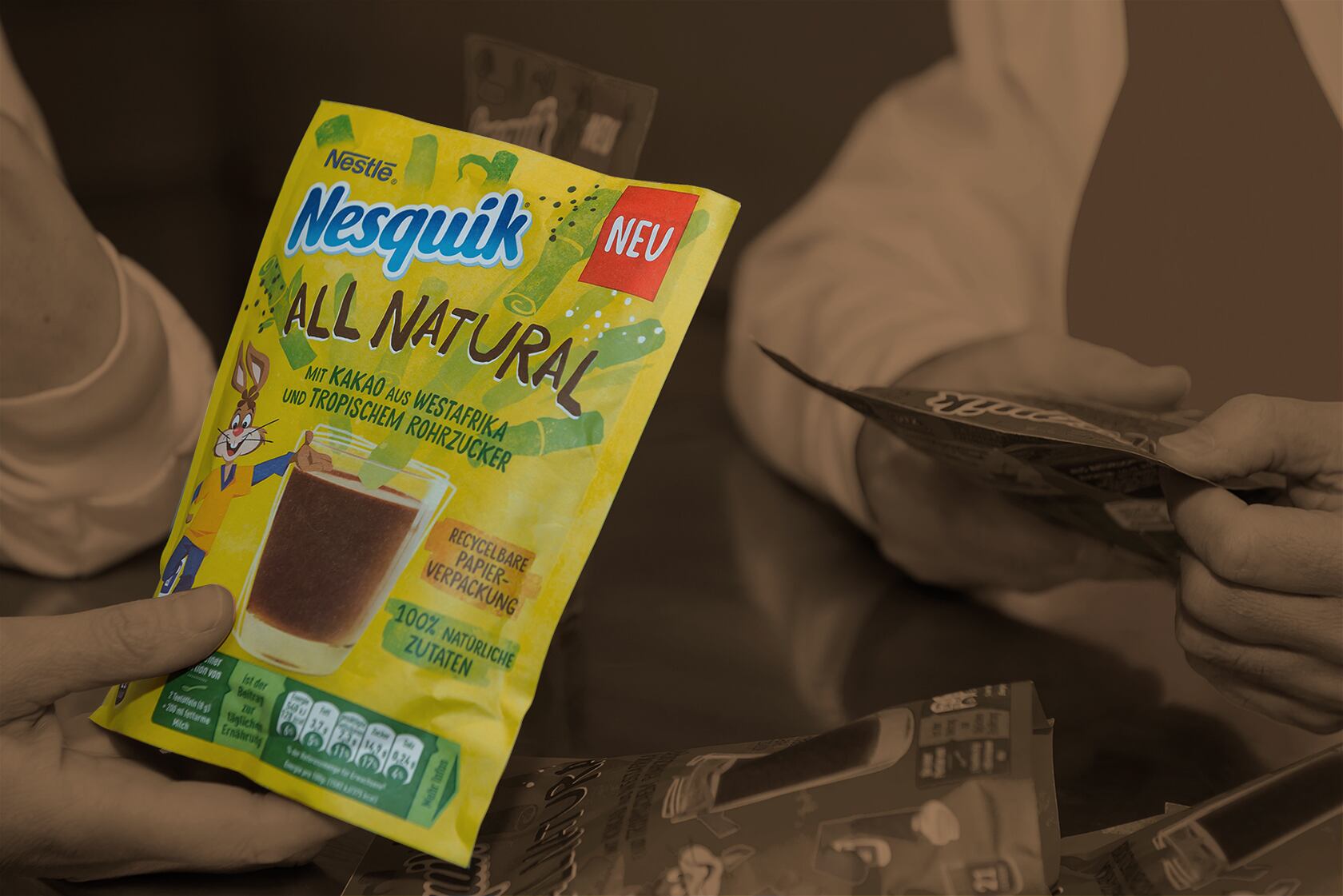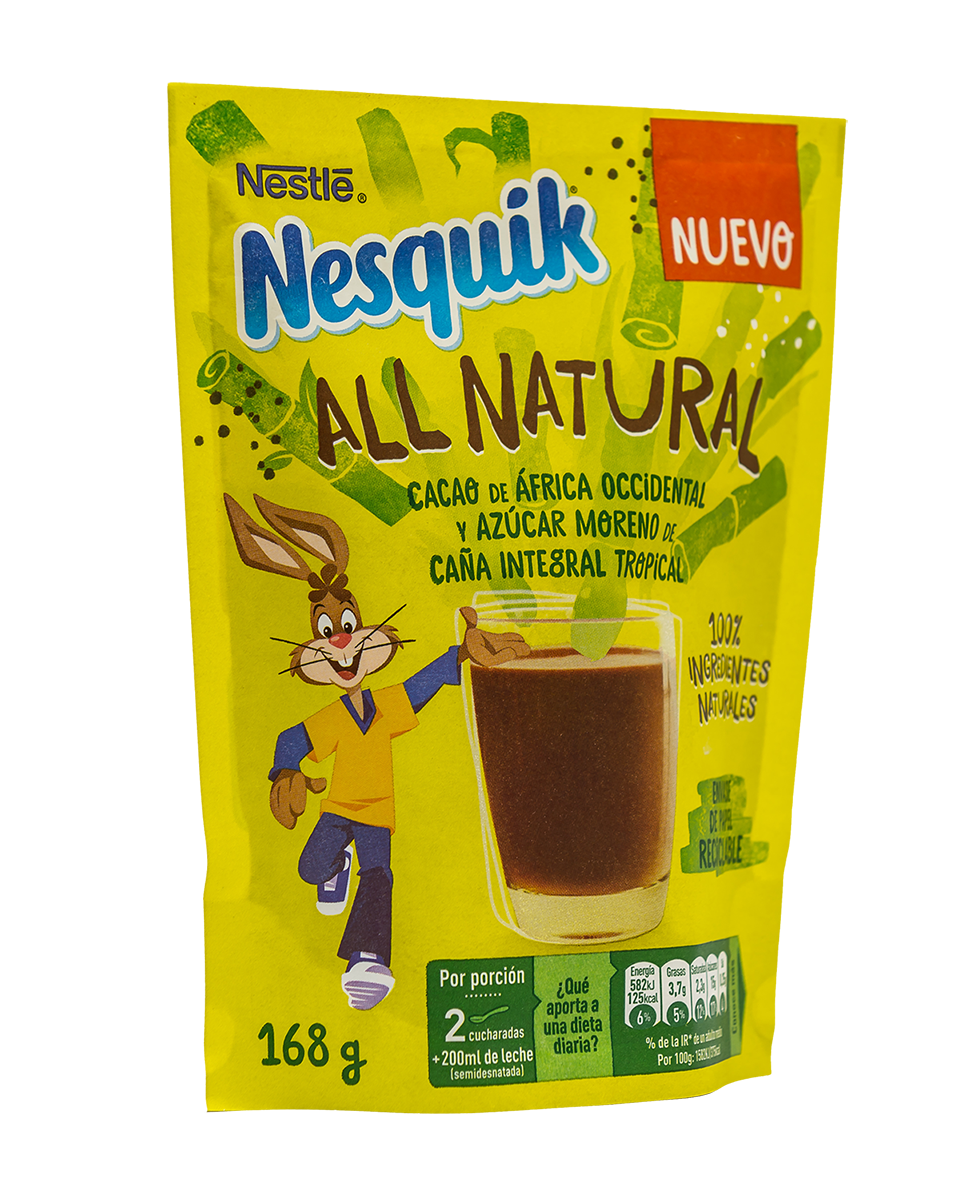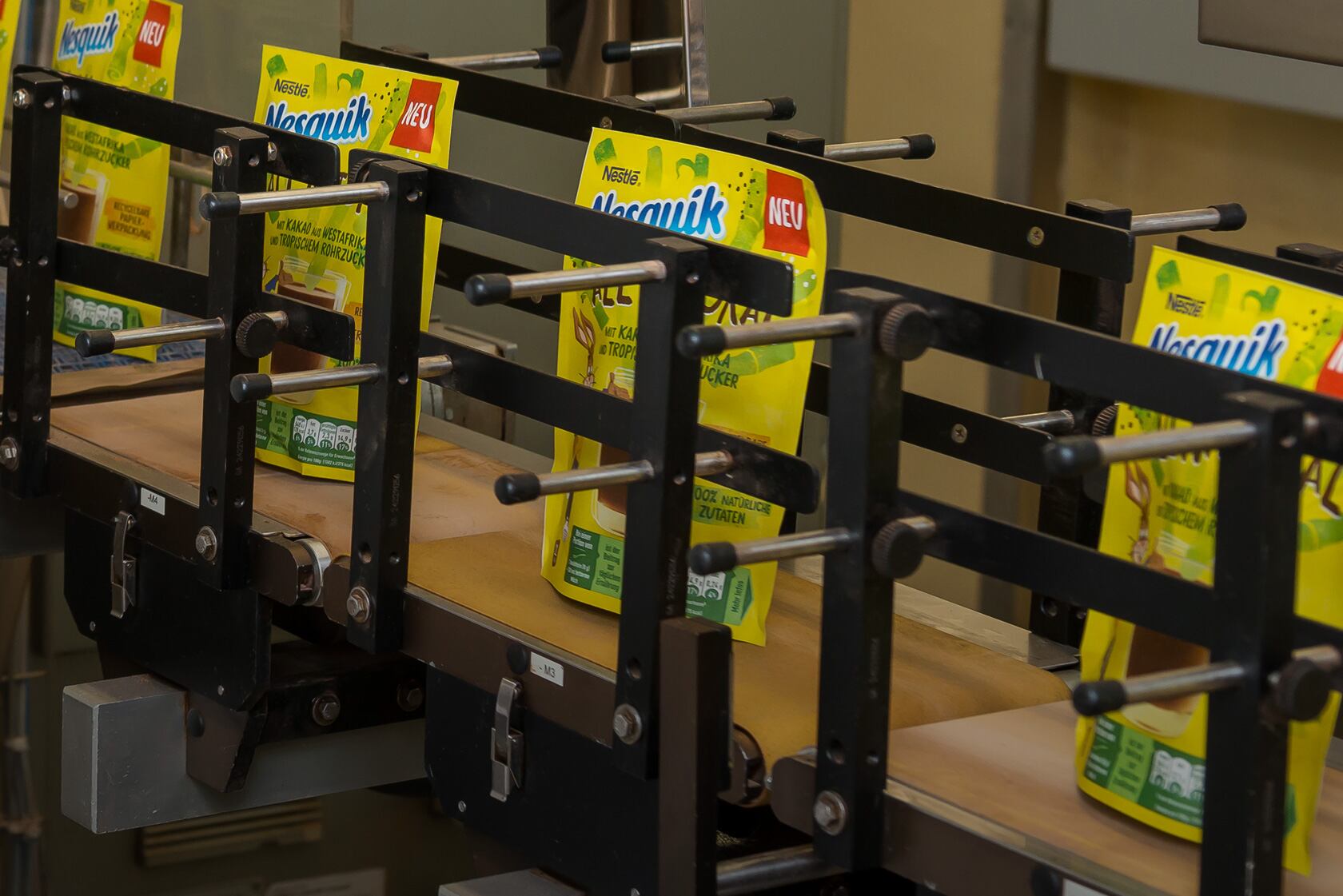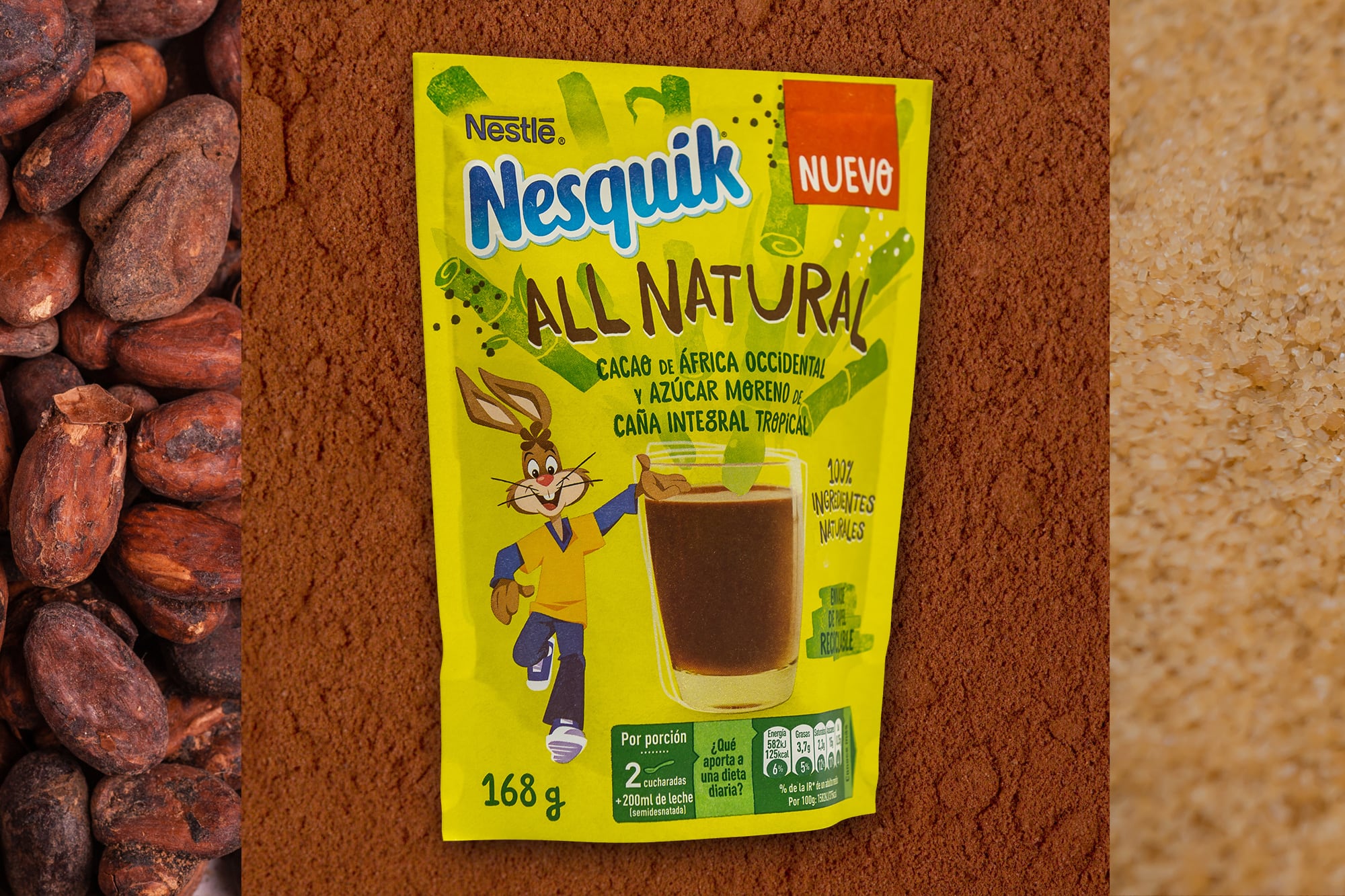In a “global first” for Nestlé, its latest innovation, Nesquik All Natural, will be available in a specially developed paper-based packaging.
The launch comes just two months after the Swiss food group said it will accelerate action to tackle plastic packaging, pledging to make 100% of its packaging re-usable or recyclable by 2025 and placing a particular emphasis on plastic waste.
According to senior packaging specialist Sarah Divanbeigi, hitting this target is “a challenge” and Nestlé is examining a series of options.
The Nesquik All Natural recipe has been developed in response to growing demand for natural products. It contains five ingredients: cane sugar, cocoa, emulsifier (soya lecithin) natural flavour and cinnamon. Its sugar content is also lower than ‘classic’ Nesquik.
The cocoa is sourced from West Africa under the Nestlé Cocoa Plan.

“We are looking at developing alternative materials for our products, like the Loop system. We are looking at alternative recyclable materials such as paper. We are trying to develop biodegradable and compostable materials and packaging. We are trying to look into using more recycled content in packaging where possible. And we are trying to simplify the structure of our packaging.”
Developing a paper-based solution
Divanbeigi noted that Nesquik All Natural is the “first product that puts the [packaging pledge] to the test” moving away from plastic, which can be difficult to recycle, to paper, which is “fully recyclable”.
The product development process is evidence of Nestlé’s efforts to be more agile in innovation. Nesquik All Natural took just nine months to complete, from conception to launch. This is a notable achievement given the particular challenges of developing a paper-based packaging material.
“The use of paper as a packaging material is not as easy as it seems… Packaging in this particular space is quite fragile, it doesn’t hold well in factory environment, it doesn’t travel well in the supply chain,” Divanbeigi explained.
“In order to address these challenges papers are usually laminated with a plastic layer. For the Nesquik All Natural range, instead of using a laminate we used a coated paper. It is a food contact approved grade and it protects the product but is still recyclable in the paper stream.”
Details of the coating are “proprietary”, Divanbeigi told FoodNavigator. However, she added, it is commonly used in the paper industry.

“We have been working in partnership with an external company. Where possible we are trying to use what is already existing in the industry instead of trying to reinvent something. Coating paper is commonly known but this is coming into content with food so we had to be careful in terms of the chemistry… it was quite a difficult balance.”
The company also had to strike a “balance” between developing a material that was fully recyclable in the paper stream and protecting the product. The company has carried out “extensive” tests to ensure the paper pouch performed adequately in storage and transportation.
Impact on shelf life and food waste
While single-use plastic is now recognised as an important problem for the food sector, plastic-based packaging does effectively help extend a product’s shelf life.
Divanbeigi said calculating the impact that the new packaging solution has on shelf life is complicated by changes in product formulation. “It is not a simple calculation that if you change your packaging your shelf life will reduce – it depends on the formulation as well.”
However, Peter Mester, business executive officer for confectionery and dairy, confirmed that the nine-month shelf life of the new All Natural product is below the year and a half shelf life of other SKUs in the Nesquik range.
Nestlé does not believe this will be a problem. According to Divanbeigi, the 168 gram packs contain 25 servings and should be used in the home well-within six months, even by “very low users”. Mester added that retailers typically carry 30-60 days of stock in store. “We don’t think it will cause an issue with shelf life.”
Price premium: 40-50% more expensive
While the end price of the product is ultimately decided by the retailer, Nesquik All Natural’s list price will be 40-50% more expensive per kilo, Mester revealed. This will partially be offset by offering a smaller pack size.
The price premium reflects higher input costs, in particular related to the recipe formulation.
“The cocoa content is almost twice as much as the mainstream recipe. The sugar is the cheapest ingredient inside a recipe. The sugar in this recipe is differentiated – it is raw cane sugar that we are going to import from outside the EU. These factors will increase the price,” Mester explained.
Divanbeigi believes that the packaging will not add a significant layer of cost. “This is a new material and in terms of costs, we are still working on that. It is not that much different from what we are currently using,” she suggested.

However, because the paper packaging is more fragile than plastic, the production line currently has to run at 40% of the speed.
Nevertheless, Divanbeigi is upbeat on the potential of this paper-based solution. “This is the first time we have used this. We are looking to see how we can apply this learnings to as many products as possible as time goes by.”
Nestlé is launching the new Nesquik All Natural in five European markets in the coming weeks: France, Germany, Italy, Portugal and Spain. It will sit alongside the existing Nesquik range, and will be rolled out to other European countries in the “near future”.
Plans are also well underway for further products in the Nesquik All Natural range across Europe, to be launched within the year. These include a zero sugar version.
FoodNavigator visited Nestlé’s dry mix production facility in Szerencs, Hungary, where Nesquik All Natural has gone into production. Check out our Editor’s Spotlight on Wednesday for a behind-the-scenes look as part of our regular video series, Prime Cut.




